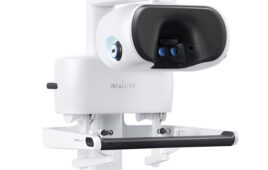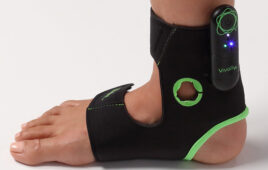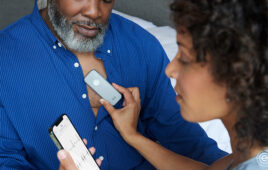Heather Thompson and Chris Newmarker

[Photo by Danny Chapman, via Flickr under Creative Commons license.]
“Just to play piano, the brain is running real-time computations on 62 degrees of freedom. It’s incredible to me … [the] precision and control and coordination.” That connection and how our hands and brain are able to work together, the computational load on the brain – it’s a fascinating subject that takes up a lot of Rutter’s day-to-day.
For Rutter, when considering how medical devices are being designed, particularly surgical instruments, the first thing designers should consider is the scientific principles related to hand coordination. His goal is to make his company the expert on the design of hand-intensive products.
Such hand-intensive products include surgical instruments, of course. But they also include the whole ecosystem that surrounds those types of hand-intensive products in the hospital, such as a console or a flip controller.
Hands are of the utmost importance to Rutter, “because all the technology in the world doesn’t matter if you can’t access it.”
The minutiae and the scientific principles of data collecting are not taught at design school. “We aren’t educated on on anatomy, on physiology, on how we move, vision, on memory – there is a scientific void in industrial design.” But these issues matter.
For example, Rutter says he likes to look at dexterity, such as which is the dominant or “smart” hand. Whether that hand is the left or the right will change the outlook of the surgeon and requires consideration from the design team. Even the detail of which finger a surgeon might use for a particular task needs to be considered. How a device might be gripped could change based on the activity. “There are all degrees of freedom that should be addressed.
Including these data into the design will help a surgeon grasp and manipulate an instrument with less cognitive load—freeing the surgeon to think about the surgical technique.
And such design is not easy.
“You have to sweat each and every detail – period – because it’s all in the details,” Rutter said. “That’s the difference between an okay design and a world-class design.”
As an example, Rutter said to consider that on a sheet of glass, fingertips can feel a bump on there about three microns high. “A human hair is 80 to 120 microns. That’s a small bump.” So, if you think about the surface texture of the device, whether it’s a smooth material versus a rough one, titanium versus a slick CNC part. “That level of surface detail has a huge impact on what the doctor can sense haptically, and the quality of that feedback.”
[Want to stay more on top of MDO content? Subscribe to our weekly e-newsletter.]






